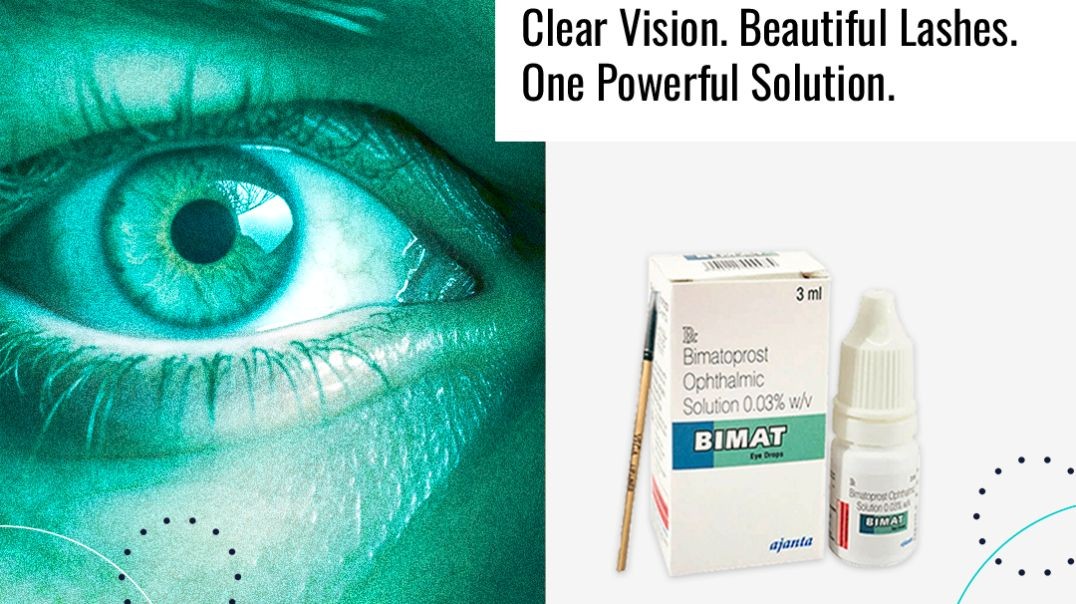Top videos
A strong medication by the name of Cenforce 120 mg is only to be used for treating male erectile dysfunction (ED).Its active ingredient, sildenafil citrate, enhances blood flow to the penis in order to cause an erection that is hard and long-lasting when one is under sensual arousal.You can buy Cenforce 120 mg tablets online. Cenforce at 120mg provides the most power to those who require an increased dose in order to observe the desired results. Guys taking this medicine are found to enjoy rewarding sensual moments and regain their sensual confidence. Careful adherence to the dosage and instructions from your doctor is important for safety and effectiveness. Swallow 120mg of cenforce with water half an hour to one hour before engaging in anything sensual. Avoid fatty foods and alcohol before taking the product because these can decrease its effectiveness. Side effects of Cenforce 120 mg are headache, dizziness, flushing, indigestion, and congestion, as with any medication. It is critical that you seek medical help immediately if you experience any bad or ongoing side effects. Any man seeking a trusted ED remedy may want to try Cenforce 120mg.Buy Cenforce 120mg online at our web store https://www.firstchoicemedss.c....om/cenforce-120mg.ht
Waklert 150mg is known as the ultimate cognitive enhancer for amplifying productivity. With Waklert, unlock your entire mental capability and let magic begin. Full of benefits and laboriously crafted with precision, this invaluable supplement is what was missing in your life. Waklert 150mg is a commonly prescribed medicine for those persons who want to feel more alert and concentrated for long periods. Waklert, with its active ingredient Armodafinil, helps promote wakefulness. This medication does wonders by stimulating activity in the brain and keeping you vigilant and sharp throughout the day. You will experience a huge boost in productivity along with mental clarity once Waklert unleashes your brain's potential. It enhances the information retaining capability to the fullest within you, and you are able to absorb like a sponge so that you deliver the best output at any given task or project. Always be ahead, never miss deadlines, and put in the best possible levels of performance at work and studies. Not only will Waklert keep your cognitive faculties at their best, but the medicine also keeps you very positive, eliminating fatigue. Say goodbye to sluggishness and hello to a more energetic and rejuvenated self. Stay motivated for a longer time and create a sense of well-being, that too leading you to achieve your goals with unmatched determination. Be rest assured that Waklert is manufactured according to the highest standard in which safety and efficacy will be guaranteed.Buy Waklert 150mg online at our web store https://www.firstchoicemedss.c....om/waklert-150mg.htm
Tadagra 20mg is a one of the exceptional ways to tailor your routine. Since Tadagra 20mg is designed to tackle issues that most men face, it is a reliable and effective means to improve sensual performance. Tadalafil is a trustworthy medication with a proven track record of incredible effectiveness and massive amounts of research backing it.The reality of this works in favor of Tadagra 20mg.This incredible chemical enhances the flow of blood to the male organ, leading to firmer and more enduring erections. Farewell anxiety about performance and welcome a new attitude toward fun and confidence. One of the most outstanding features of Tadagra 20 mg is how long its effects will last. A single pill can give you enhanced sensual strength for as long as 36 hours, allowing you the independence to take advantage of situations as and when they come.Tadagra 20mg boasts superb performance benefits along with its remarkable ease of use. It takes only a single pill and a single glass of water to begin an exciting and rewarding journey. Tadagra 20 mg is produced under the tightest safety controls to guarantee its effectiveness, safety, and purity.Buy Tadagra 20mg online at our web store https://www.firstchoicemedss.com/tadagra-20mg.html
Almox 250mg is a prescription based antibiotic that has been designed to enable you to fight off bacterial infections more successfully. Designed through the action of Amoxicillin, this drug acts by preventing bacteria from growing, and that makes it an essential component of your healthcare kit. No matter if it is respiratory infections, urinary infections, or skin infections, Almox 250mg may be a good remedy to get you back to normal.You can buy Almox 250mg tablets online at cheap price. What distinguishes Almox is its fast relief with minimal side effects. It is well tolerated by most patients, and it may be administered with or without food, hence making it easy to administer daily. It arrives along with a suggested dosage that is suitable for you, hence you receive best treatment. Almox is neither the cure of infection; it's enabling one to live life on his terms. Supported by an unbeatable legacy and dedication to excellence, Almox 250mg is people's choice who require effective, safe, quick-acting solutions to their issues.Buy Almox 250mg online at our web store https://www.firstchoicemedss.com/almox-250mg.html
Auvitra 20mg is an effective solution that contains a great ingredient called vardenafil (20mg).This medication is used to cure impotence or erectile dysfunction in men. Auvitra is an excellent medication which acts on the problems of your ed so we have the remedy now to get over your ed problems. This product has the ingredient which is a PDE5 inhibitors class member. In ed men are not capable of achieving a hard erection sufficient for the intercourse so this one member of PDE5 inhibitors class enhances the flow of blood to the male's genital organ which aids them in getting the hard erection sufficient for intercourse which results to form satisfaction in sensual acts among both of the members.This product is a prescription one so you need to take that from your doctor. Without doctor's prescription or advice of your medical practitioner this should not be consumed at any cost. This is the safest method of eliminating this issue from your life if you meet all the required conditions to have it.Buy Auvitra 20mg online at our web store https://www.firstchoicemedss.com/auvitra-20mg.html
Malegra 50mg tablet is one of the best prescription based product which can be found in the market for curing or treating erectile dysfunction which is a very common issue these days.This product has one of the most powerful ingredients which is also referred to as sildenafil citrate. Sildenafil citrate (50 mg) is utilized in the formulation of this medicine and it works as it's primary active ingredient.Malegra is a pretty good medicine which is utilized to treat your ed. You can buy Malegra 50mg dosage online in Australia.This is not highly strong as when it comes to dosage so this can be included in the middle ones.You need to swallow this medicine as whole with water but you can't chew this medicine because it is not chewable or broken into small pieces.Avoid fatty foods before taking this medicine and alcohol intake is also not recommended before taking this medicine because these two conditions can affect the efficacy of the medicine.Keep it out of reach of your children and pets(if any). Keep it in a dry and cool place from the moisture.Malegra(50 mg) is an excellent product when it comes to remove the large problem of Ed.Buy Malegra 50mg online at our web store https://www.firstchoicemedss.c....om/buy-malegra-50mg-
Sildenafil Super Active Tablets for smooth muscle relaxation allows increased blood flow into certain areas of the penis, sexual arousal in harsh, prolonged erection for maximum sexual performance.
Buy Now : https://www.rsmenterprises.in/....product/viewdetail/s
#rsmenterprises #health #healthcare #sildenafilsuperactive #sildigrasuperactive #genericviagra #maleviagra
Super Kamagra 160mg is a perfect mixture that contains the active compounds sildenafil citrate and dapoxetine. Sildenafil citrate is a class of products under phosphodiesterase type 5 (PDE5) inhibitors, which are prescribed to treat erectile dysfunction (ED) by increasing blood supply to the male genital organ.Dapoxetine, however, is a selective serotonin reuptake inhibitor (SSRI) employed in the treatment of premature ejaculation (PE) by delaying ejaculatory latency.You can buy Super Kamagra 160 mg online in Australia and is generally taken orally, with effects beginning after 30 minutes to an hour. The action of the product can last for as much as 4 hours. It is very important to adhere to the recommended dosage and instructions given by a doctor, as overuse may result in increased side effects and serious health issues. Medical attention should be immediately obtained if any of these serious side effects should occur. People suffering from specific medical ailments, including serious heart or liver issues, low blood pressure, or previous loss of vision, must not take this product. In addition to this, patients on nitrates and alpha-blockers must not take Super Kamagra 160 mg, as it may interfere with these drugs and lead to serious health issues.Buy Super Kamagra 160mg online at our web store https://www.firstchoicemedss.c....om/super-kamagra-160
Anaconda 120mg is the final answer to making your vitality even better and taking your sensual experiences to a whole new level. Specifically made with the best ingredients, Anaconda 120mg is made to give you an intense kick so that you are able to get the best out of yourself and feel completely satisfied.You can buy Anaconda 120mg cheap online. Unleash Anaconda 120mg's strength and let its amazing qualities enhance your sensual experience. With a single capsule, you'll be able to feel an unprecedented rush of energy, stamina, and endurance that will leave you and your partner stunned.Anaconda 120mg is carefully designed to increase blood flow to the critical areas, leading to harder, longer-lasting erections. What makes Anaconda 120mg stand out is its dedication to your safety and health. Every capsule is subjected to strict quality control procedures and manufactured in cutting-edge facilities, so you get a dependable and reliable product. Don't worry, Anaconda 120mg is made using only the best ingredients that have been scientifically chosen to give you your best intimate moments. Feel the change that Anaconda 120mg brings and relive the romance and passion that you and your partner should be enjoying.Buy Anaconda 120mg online at our web store https://www.firstchoicemedss.com/anaconda-120.html
Filagra 100mg is your key to more intimate moments and rekindling passion. Filagra 100mg is a powerful and effective way for those searching for a rewarding and satisfying experience.It will definitely help you to rebuild your romantic life.This scientifically brilliant discovery gives you the boost you were looking for through its sophisticated recipe.Filagra 100mg is designed to help men achieve and maintain a firm erection, thus boosting their self-assurance and pleasure in bed. Whatever your objectives are, Filagra 100 mg is available to help. You can take this product when necessary to give the best performance or even to overcome infrequent problems. Filagra 100 mg is manufactured with safety, efficiency, and reliability in mind, which is backed up by strict quality measures and modern research. The quick-acting mechanism, therefore, enables you to achieve the intended results as soon as possible and to have the freedom to enjoy those unplanned, magical moments. With Filagra 100 mg, a reliable traveling companion on your journey towards increased confidence, closeness, and joy, rediscover the pleasure of intimacy.Buy Filagra 100mg online at our web store https://www.firstchoicemedss.c....om/filagra-100mg.htm
Bimat 3ml (Bimatprost Opthalmic Solution) is an effective solution to resolve the problem of Glaucoma. It comes with an active substance of Bimatprost Opthalmic Solution 3ml.
Buy Now : https://www.rsmenterprises.in/....product/viewdetail/b
#rsmenterprises #health #healthcare #bimat3mleyedrop #glaucoma #eyedrop #eyehealth
Men who are suffering from erectile dysfunction (ED) can consume this drug called tadaga oral jelly.It contains the phosphodiesterase (PDE-5) inhibitor tadalafil as its active component. PDE-5 inhibitors function by boosting blood flow to the male genital organ, which enables an erection to happen when the senses are aroused. It is customary to take Tadaga 20mg orally 30 or 60 minutes before engaging in sensual activities.Tadaga 20mg is a treatment option for ED.It's crucial to understand that this medicine does not heighten sensual desire and cannot function without sensual stimulation. This medication frequently causes flushes, indigestion, back discomfort, headaches, and muscle aches. Before using this medication, it's crucial to speak with a doctor because it can interact with other products or health issues. Women and children are not advised to use this drug. To sum up, Tadaga Oral Jelly is a prescription drug used to treat male erectile dysfunction (ED). To guarantee its safe usage, people should only use it as prescribed by a doctor and tell them about any medical problems or medications they are currently taking.Buy Tadaga 20mg Oral Jelly online at our web store https://www.firstchoicemedss.c....om/tadaga-oral-jelly
Azee 250mg acts as an exceptional rescuer towards the end when it comes to to fight bacterial infection.Azee 250mg is an excellent product filled with convenience & a perfect composition to treat infection.Right from the respiratory tract infection to the skin infection and also other bacterial ailments, Azee 250mg is there to provide you with speed relief and put you on your two feet. Even though it is as its strong active component, with every tablet of Azee 250mg performing round-the-clock action against harmful bacteria as well as growth inhibition, this broad-spectrum antibiotic has an extended spectrum of bacterial strains to offer the widest coverage and is bound to deliver the best therapy outcome. It is the convenient dosing regimen of Azee 250mg that differentiates it from the rest. Convenience in Azee 250mg doesn't compromise efficiency-the every tablet has the optimal dose needed to defeat infection. The medicine is highly tolerable; hence, Azee 250 mg can be prescribed even to the general population, right from adult to child. Well-tolerated formulation of Azee eliminates side effects and allows one to carry on with all day-to-day activities without any break.Buy Azee 250mg online at our web store https://www.firstchoicemedss.com/azee-250-mg.html
Kamagra 50mg is well-liked and globally used; it has a great reputation for its wonderful efficiency in helping men restore their confidence and to have a satisfactory sensual experience.This prescription contains an active element called sildenafil citrate, which is well known for increasing the flow of blood in the penile area, giving a strong and long-standing erection.You can buy Kamagra 50 mg tablets cheap online.Basically, Kamagra 50mg provides an avenue to attain and sustain a healthy and gratifying sensual performance, and this indeed paves the road to restored self-confidence and personal fulfillment. The ideal dose strength of Kamagra 50mg is one of its most prominent benefits.The precise amount of sildenafil citrate in each pill ensures excellent outcomes without taxing the user's system.This methodical approach protects the patient's general health while enabling the intended effects of the medicine to be felt. Besides, Kamagra 50 mg is made to be convenient and easy to use. It's simple to take; just take a tablet with a glass of water about 30 to 60 minutes before indulging in sensual activities. This way, you can enjoy happy, unplanned moments without going overboard with preparation. Those who use Kamagra 50 mg free themselves from the constraints of erectile dysfunction and can experience a fulfilling and close connection.Buy Kamagra 50mg online at our web store https://www.firstchoicemedss.com/kamagra-50mg.html
Welcome to the next episode of Fertility Focus Podcast!
If you’ve been trying to conceive and still not seeing results, it’s time to look beyond female fertility alone. Did you know that 50% of infertility cases are due to male factors?
This episode from Fertility Focus dives deep into male infertility, how semen analysis works, what your reports really mean, and what to do if the numbers don’t look right.
We bust myths, decode complex terms, and offer science-backed clarity on improving chances of conception.
What we covered:
✅What is semen analysis, and why is it important?
→ It checks sperm count, movement, and shape, all critical for natural conception.
✅When should a man get a semen test done?
→ After 12 months of trying to conceive, or after 6 months if the female is over 35.
✅Can semen quality be judged by its colour or thickness?
→ No, only lab analysis can determine true sperm health.
✅What are the prerequisites before giving a semen sample?
→ 2 to 5 days of abstinence and sample collection at a proper lab, not at home.
✅Can sperm count be too low even if the volume looks normal?
→ Yes, concentration matters more than total volume.
✅What is the difference between total sperm count and concentration?
→ Count is the total number of sperm in the ejaculate; concentration is per ml.
✅Why does one man have 2 million count and another has 100 million, despite similar lifestyles?
→ Hormonal levels, genetic factors, or testicular issues may be at play.
✅Can a very low sperm count be increased with treatment?
→ Sometimes yes, especially if it’s due to hormone imbalance or infection.
✅What lifestyle habits reduce sperm count and motility?
→ Obesity, smoking, stress, lack of exercise, poor diet, and steroids.
✅What is sperm motility, and why is it important?
→ Motility is how well sperm can swim to reach the egg. Without it, fertilisation is unlikely.
✅What are progressive vs. non-progressive motility types?
→ Progressive means forward movement; this is needed to fertilize the egg.
✅What causes poor sperm motility (Asthenozoospermia)?
→ Often infections, poor lifestyle, or damage to mitochondria in sperm.
✅Can poor motility be improved?
→ In many cases, yes—through infection treatment, lifestyle change, and antioxidants.
✅What is sperm morphology, and how much does it matter?
→ It's about sperm shape. While poor shape doesn’t always stop pregnancy, extreme defects like globozoospermia do.
✅Can someone have 0% normal sperm morphology and still conceive?
→ Yes, studies show conception is possible if count and motility are good.
✅Why do semen reports vary from time to time?
→ Illness, stress, sample error, and abstinence period can all affect reports.
✅What if sperm count and motility are fine but pregnancy still isn’t happening?
→ Advanced tests like DFI (DNA Fragmentation Index) or ROS (oxidative stress) may be needed.
✅What is DFI and who should get it done?
→ DNA Fragmentation Index helps identify sperm DNA damage; best for smokers, failed IUI/IVF cases, or unexplained infertility.
✅What is hemizona assay and why is it done?
→ It checks sperm’s ability to bind with the egg’s outer layer—helpful in unexplained infertility.
✅What causes blood in semen or sudden colour changes?
→ Usually infection or trauma, and rarely can indicate cancer. Always consult a urologist.
✅What to do if no semen comes out during ejaculation?
→ It could be retrograde ejaculation. A urine test may help recover sperm.
Infertility isn’t just a female issue. Every couple trying to conceive should consider a complete semen evaluation by a trained expert. Don’t rely on guesswork or myths. Get real answers from real tests. If your report is confusing or concerning, we’re here to help.
Watch the full episode to get clarity!
Book your consultation with our fertility experts today and move forward confidently on your parenthood journey.
--------------------------------------------------------------------------------------------
About Dr. Rhythm Gupta and Excel IV
Founded by Dr. Rhythm Gupta, a highly qualified IVF expert in Delhi, Excel IVF offers treatments of an exceptional team of specialists, sonographers, nurses, counselors, etc. who have high-end experience and exceptionally professional in their respective fields.
To know more
Consult Dr. Rhythm Gupta, an Infertility Specialist at Excel IVF.
☎️ 98114-74471 | 89209-63596
📧 drrhythmgupta@gmail.com
🌎 Visit our website: https://excelivf.com/
https://www.instagram.com/excel_ivf/
https://www.facebook.com/excelivf/
https://www.linkedin.com/in/rhythm-ahuja-1a4752b3
#maleinfertility #semenanalysis #spermcount #lowspermcount #improvespermquality #malefertility
Can You Become a Father with Lower Sperm Levels | Sperm Count Nil | Dr Rhythm Gupta - IVF Specialist
Are you worried about having zero sperm count (Azoospermia) and wondering if you can still become a father with your own sperm? In this video, we discuss the techniques and possibilities that can help men with Azoospermia fulfil their dream of fatherhood.
Watch to learn about modern solutions that make this possible.
Check what is covered in the video:
✅What is Azoospermia?
It’s a condition where there are no sperm in the ejaculate, detected during semen analysis.
✅Where is sperm produced?
Sperm is produced in the testicles and travels through specific pathways to be ejaculated.
✅What causes zero sperm count?
It can be due to blockages, hormonal imbalances, infections, or past surgeries.
✅How is sperm production assessed?
Through blood tests checking hormones like FSH, LH, testosterone, thyroid, and prolactin.
✅What happens if hormones are normal?
It indicates sperm production is likely happening in the testicles but might be blocked.
✅How can sperm be retrieved if there’s a blockage?
Using techniques like PESA, TESA, or TESE to directly extract sperm.
✅What if hormones are abnormal?
Hormone therapy or injections can stimulate sperm production in many cases.
✅What is Micro-TESE?
A specialized technique using a microscope to extract sperm from areas in the testicles where production is still happening.
✅Can retrieved sperm be used naturally?
No, retrieved sperm is used in IVF or ICSI procedures for conception.
✅What should be the first step?
Consult a doctor for hormonal evaluation and proper guidance.
If you or someone you know is facing Azoospermia, don’t lose hope. Modern medical techniques can help you achieve parenthood with your own sperm.
Watch this video for detailed insights, and don’t forget to book a consultation with us to explore your options further. We are here to help!
---------------------------------------------------------------------------------------------
About Dr. Rhythm Gupta and Excel IVF
Becoming parents is the most blissful moment in a person’s life. Infertility not only affects the couple but equally disturbs the entire family. Excel IVF is one of the most trustworthy fertility hospital and IVF center in Delhi that renders exceptional patient care. For all kind of fertility challenges, Excel IVF offer highly specialized and comprehensive treatments including high-risk pregnancy and neonatology services.
Founded by Dr. Rhythm Gupta, a highly qualified IVF expert in Delhi, Excel IVF offers treatments of an exceptional team of specialists, sonographers, nurses, counselors, etc. who have high-end experience and exceptionally professional in their respective fields. Our efficient team is backed with the latest tools and technologies.
To know more
Consult Dr. Rhythm Gupta, an Infertility Specialist at Excel IVF.
☎️ 98114-74471 | 89209-63596
📧 drrhythmgupta@gmail.com
🌎 Visit our website: https://excelivf.com/
https://www.instagram.com/excel_ivf/
https://www.facebook.com/excelivf/
https://www.linkedin.com/in/rhythm-ahuja-1a4752b3
#malefertility #azoospermia #zerospermcount #maleinfertility #ivf #icsi #fertilitytreatment #hormonetherapy #microtese #malehealth #parenthooddream #spermretrieval #testicularhealth #fertilitysupport #fatherhoodjourney #drrhythmgupta #excelhospital #excelivf
Buy Sildalist Strong is a preeminent medication that works to promote solution the chronic health condition, majorly known as Erectile Dysfunction. The oral medication comes with a blend of two active substances such as Sildenafil 100mg and Tadalafil 40mg.
Buy Now : https://www.rsmenterprises.in/....product/viewdetail/s
#rsmenterprises #health #healthcare #sildaliststrong #sildenafil100mg #tadalafil40mg #edmedicine #genericviagra #maleviagra
Tadalafil 10mg Tablets are used to treat the physical problems of erectile dysfunction in men. Tadalafil 10mg Tablets works along with sexual stimulation to help achieve an erection.
Buy Now : https://www.rsmenterprises.in/....product/viewdetail/t
#rsmenterprises #health #healthcare #tadalafil10mg #tadaga10mg #edmedicine #maleedmedicine #genericcialis
Buy best quality Kamagra Effervescent tablets at RSM Enterprises. These are highly effective to be used for Erectile Dysfunction. Cheapest Drugs Online - Buy To Save Money!
Buy Now : https://www.rsmenterprises.in/....product/viewdetail/k
#rsmenterprises #health #healthcare # KamagraEffervescent #sildenafil100mg #edmedicine #genericviagra #maleviagra
Abhirise 20mg is a wonderful product that is used for the treatment or cure of erectile dysfunction or impotence in males. The primary active ingredient, which is used in the composition of this medicine, is termed Tadalafil (20mg). Abhirise 20mg tablets are inexpensive so it is a better alternative to choose from ed medicines. issue.This medicine helps you attain a firm erection for intercourse which helps to give a pleasurable experience to you and your partner both.The main things you have to consider before taking this medicine are that you are not allergic to the ingredient, you must not be taking nitrates, and you are not taking any other ed medicine. If you have some serious cardiac issues or liver and kidney issues then you must tell your doctor about that thing because otherwise, it can be fatal for you if you have not told them about your condition first. Keep it in a cool, dry place away from moisture. This medicine is exclusively for men but below 18 you are not permitted to have this. issues. This should be taken once in 24 hours and not more than that It should be taken with a glass of water and consumption of alcohol should be avoided. Avoid fatty meals before consumption of this medicine because it can reduce the effectiveness of the medicine.Buy Abhirise 20mg online at our web store https://www.firstchoicemedss.c....om/abhirise-tadalafi




















